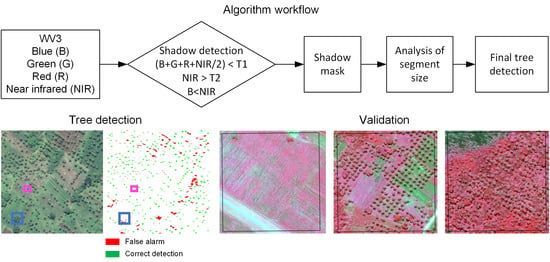Remote Sensing of Coconut Trees in Tonga Using Very High Spatial Resolution WorldView-3 Data
Abstract
1. Introduction
2. Method
2.1. Algorithm Description
2.2. Validation
3. Results
4. Conclusions
Author Contributions
Funding
Conflicts of Interest
References
- Ke, Y.; Quackenbush, L.J. A review of methods for automatic individual tree-crown detection and delineation from passive remote sensing. Int. J. Remote Sens. 2011, 32, 4725–4747. [Google Scholar] [CrossRef]
- Teina, R.; Béréziat, D.; Stoll, B.; Chabrier, S. Toward a global Tuamotu archipelago coconut trees sensing using high resolution optical data. In Proceedings of the IEEE International Geoscience and Remote Sensing Symposium IGARSS 2008, Boston, MA, USA, 7–11 July 2009; pp. 797–800. [Google Scholar]
- Li, W.; Fu, H.; Yu, L.; Cracknell, A. Deep learning based oil palm tree detection and counting for high-resolution remote sensing images. Remote Sens. 2016, 9, 22. [Google Scholar] [CrossRef]
- Weinstein, B.G.; Marconi, S.; Bohlman, S.; Zare, A.; White, E. Individual tree-crown detection in RGB imagery using semi-supervised deep learning neural networks. Remote Sens. 2019, 11, 1309. [Google Scholar] [CrossRef]
- Mubin, N.A.; Nadarajoo, E.; Shafri, H.Z.M.; Hamedianfar, A. Young and mature oil palm tree detection and counting using convolutional neural network deep learning method. Int. J. Remote Sens. 2019, 40, 7500–7515. [Google Scholar] [CrossRef]
- Tianyang, D.; Jian, Z.; Sibin, G.; Ying, S.; Jing, F. Single-tree detection in high-resolution remote-sensing images based on a cascade neural network. ISPRS Int. J. Geo Inf. 2018, 7, 367. [Google Scholar] [CrossRef]
- Wu, W.; Zheng, J.; Fu, H.; Li, W.; Yu, L. Cross-Regional Oil Palm Tree Detection. In Proceedings of the IEEE/CVF Conference on Computer Vision and Pattern Recognition Workshops CVPR2020, Seattle, WA, USA, 13–19 June 2020; pp. 56–57. [Google Scholar]
- Vargas-Muñoz, J.E.; Zhou, P.; Falcão, A.X.; Tuia, D. Interactive Coconut Tree Annotation Using Feature Space Projections. In Proceedings of the IEEE International Geoscience and Remote Sensing Symposium IGARSS 2019, Yokohama, Japan, 28 July–2 August 2019; pp. 5718–5721. [Google Scholar]
- WorldView-3. Available online: http://worldview3.digitalglobe.com (accessed on 22 September 2020).
- Olofsson, P.; Foody, G.M.; Herold, M.; Stehman, S.V.; Woodcock, C.E.; Wulder, M.A. Good practices for estimating area and assessing accuracy of land change. Remote Sens. Environ. 2014, 148, 42–57. [Google Scholar] [CrossRef]
- Gallego, F.J.; Kussul, N.; Skakun, S.; Kravchenko, O.; Shelestov, A.; Kussul, O. Efficiency assessment of using satellite data for crop area estimation in Ukraine. Int. J. Appl. Earth Obs. Geoinf. 2014, 29, 22–30. [Google Scholar] [CrossRef]
- Song, X.P.; Potapov, P.V.; Krylov, A.; King, L.; Di Bella, C.M.; Hudson, A.; Khan, A.; Adusei, B.; Stehman, S.; Hansen, M.C. National-scale soybean mapping and area estimation in the United States using medium resolution satellite imagery and field survey. Remote Sens. Environ. 2017, 190, 383–395. [Google Scholar] [CrossRef]
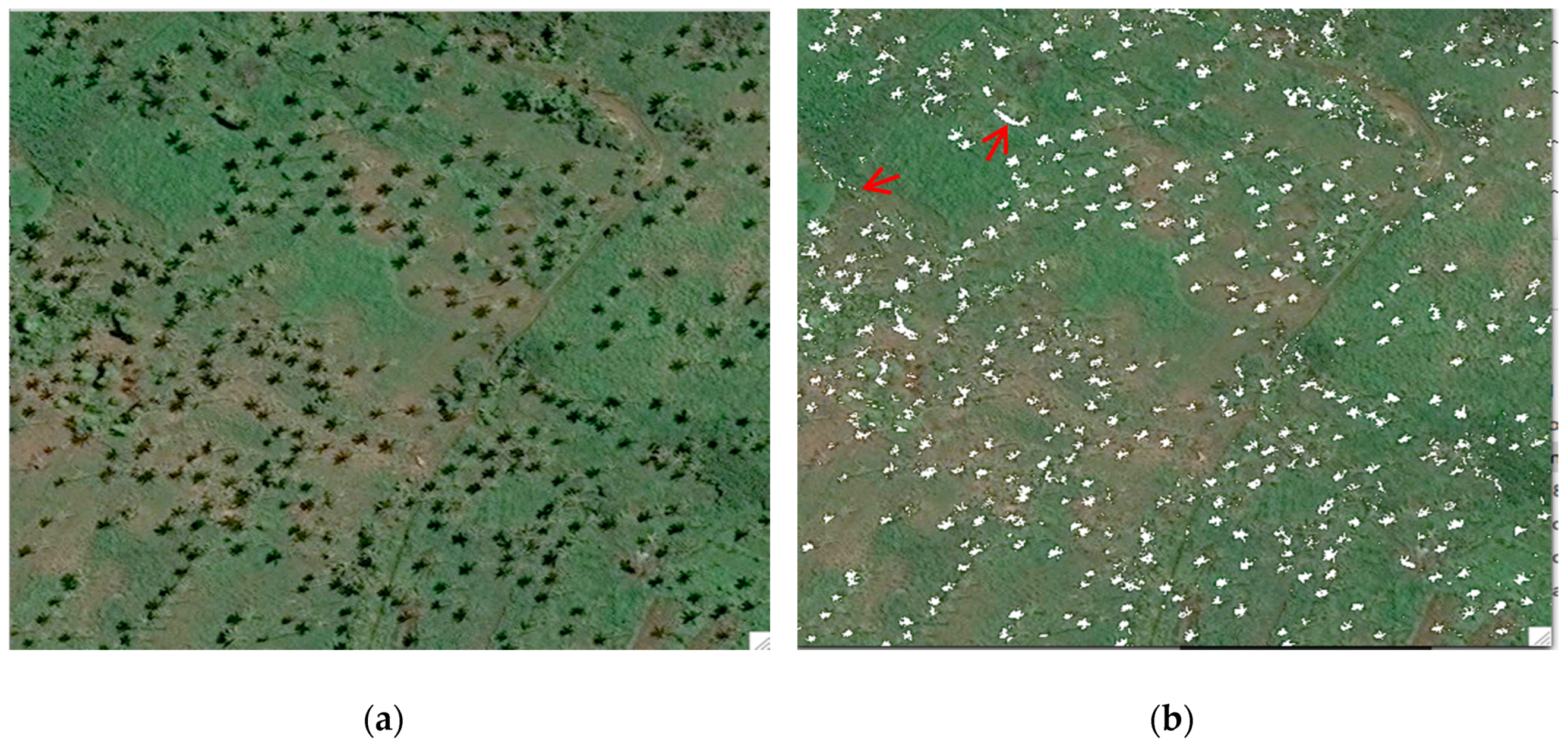
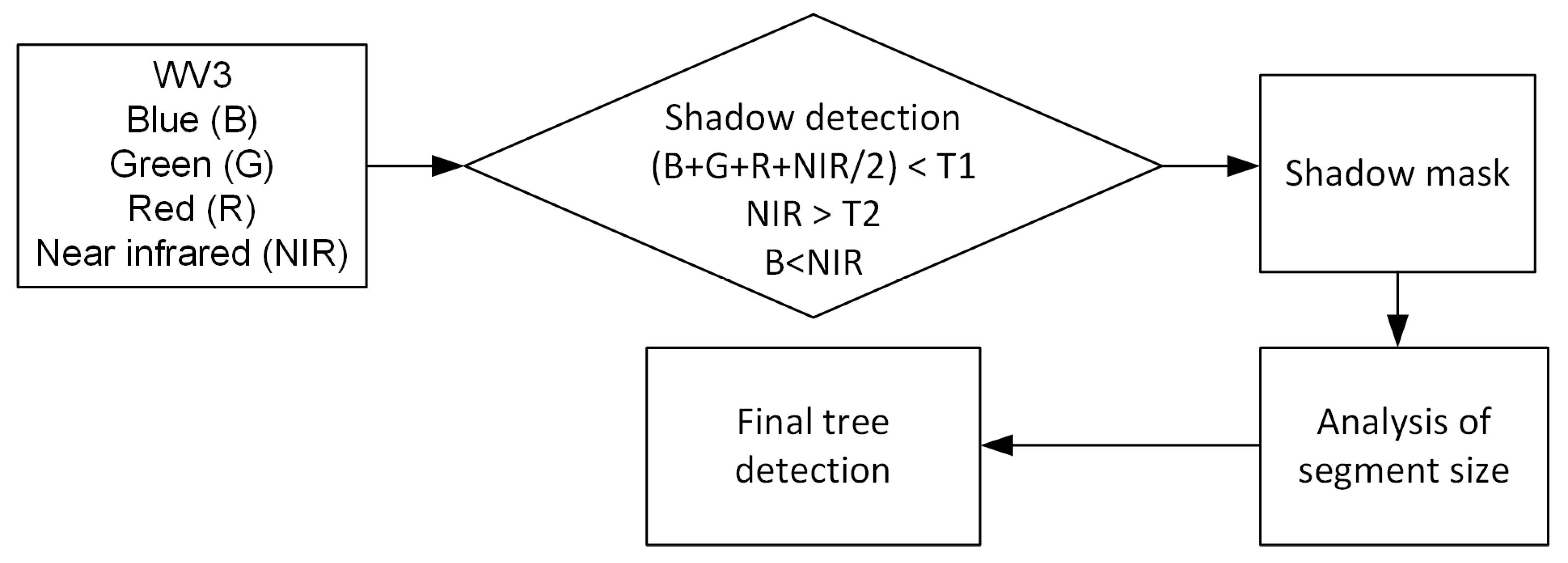
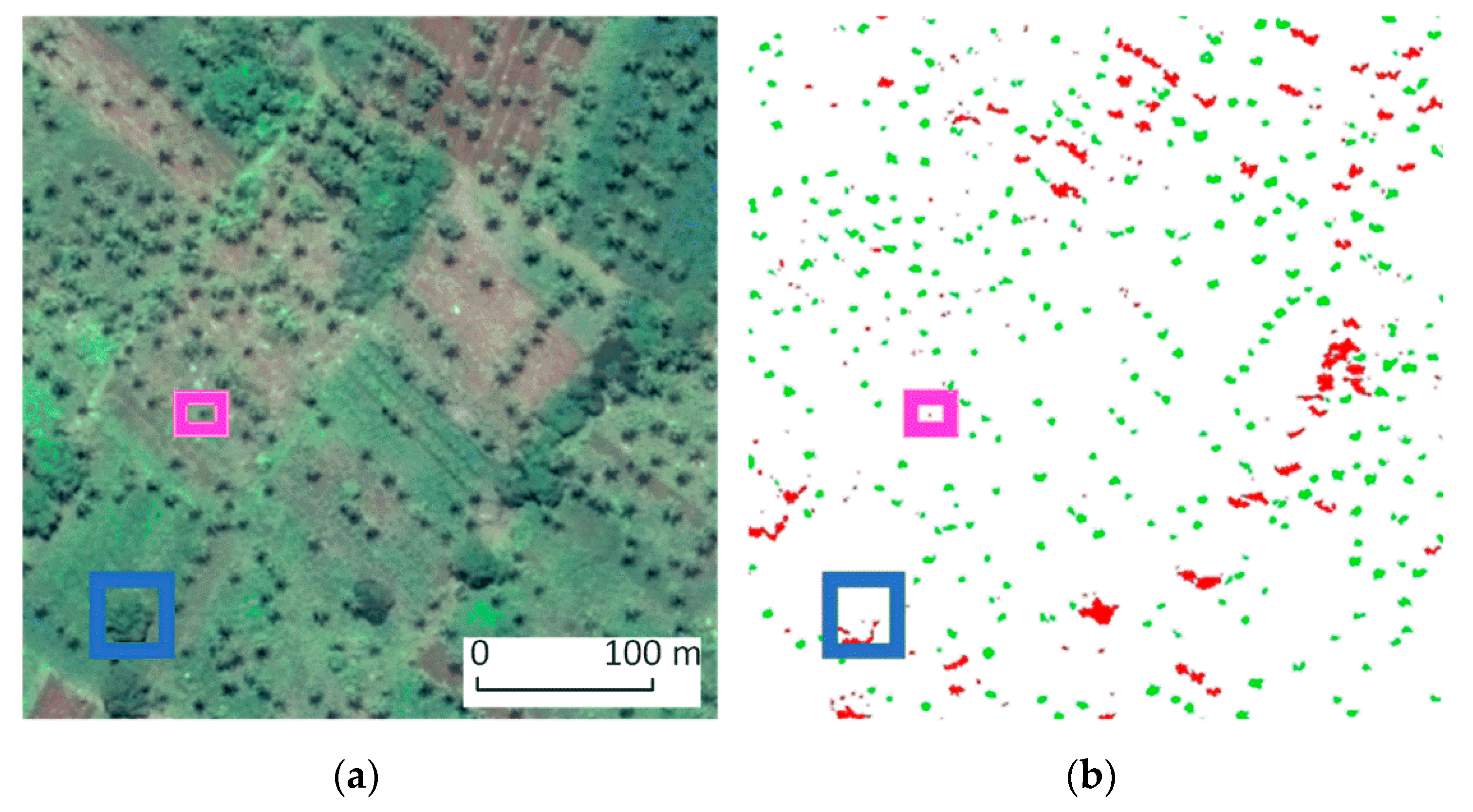
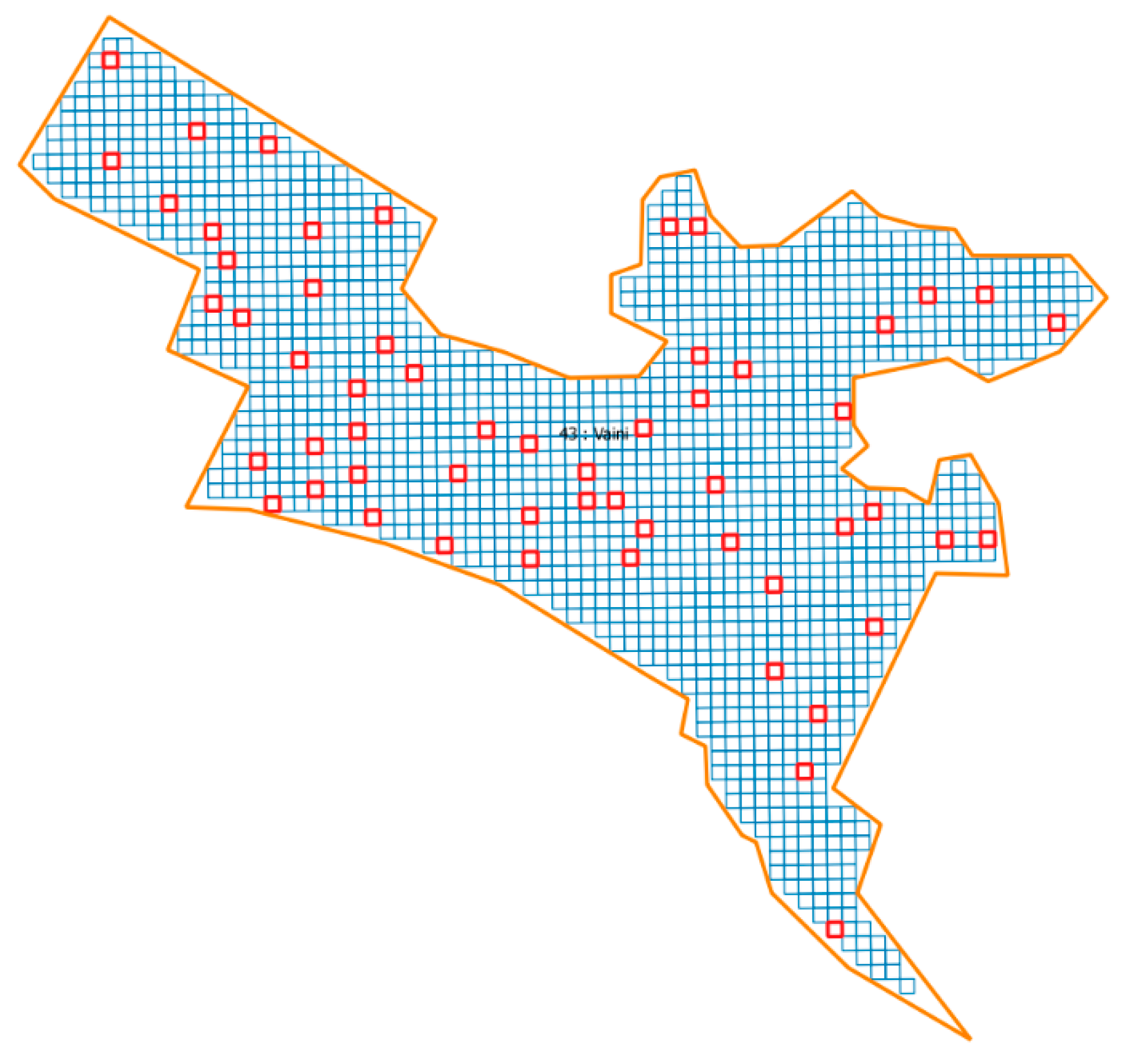
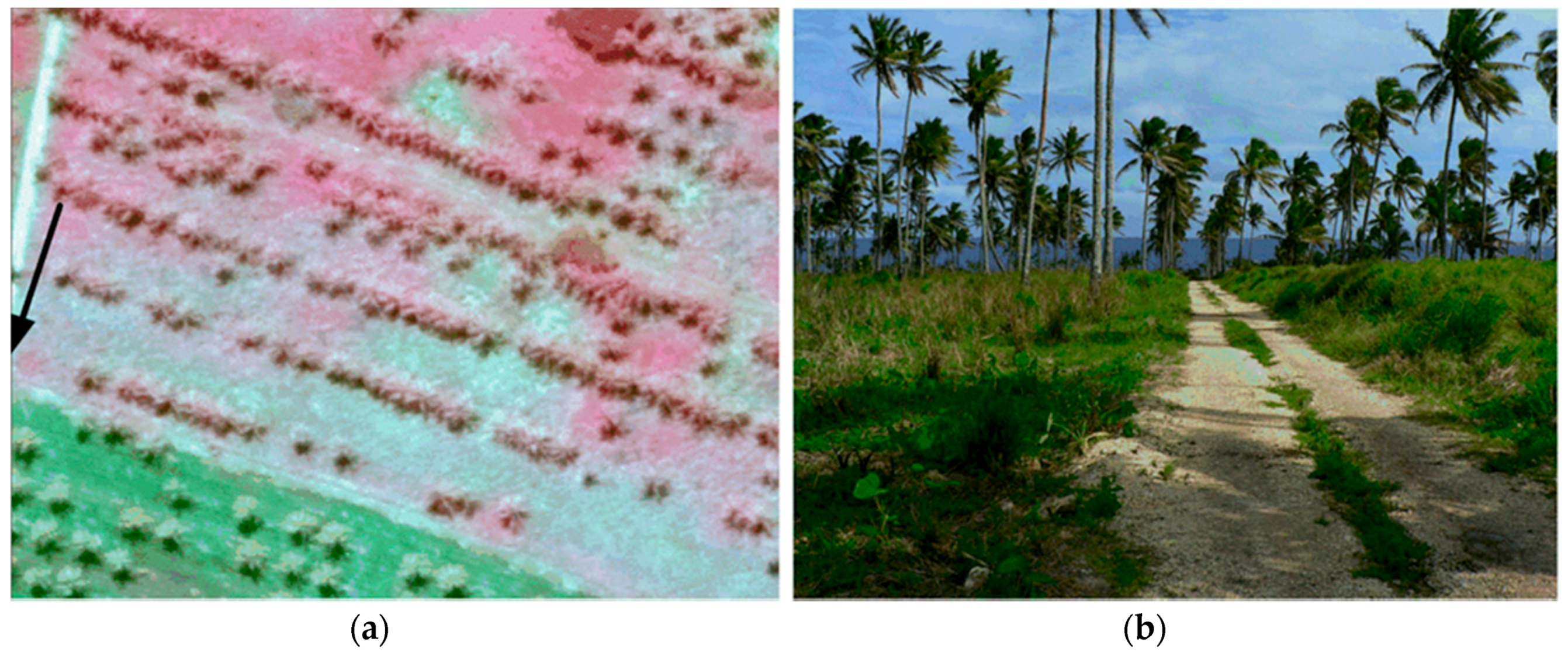

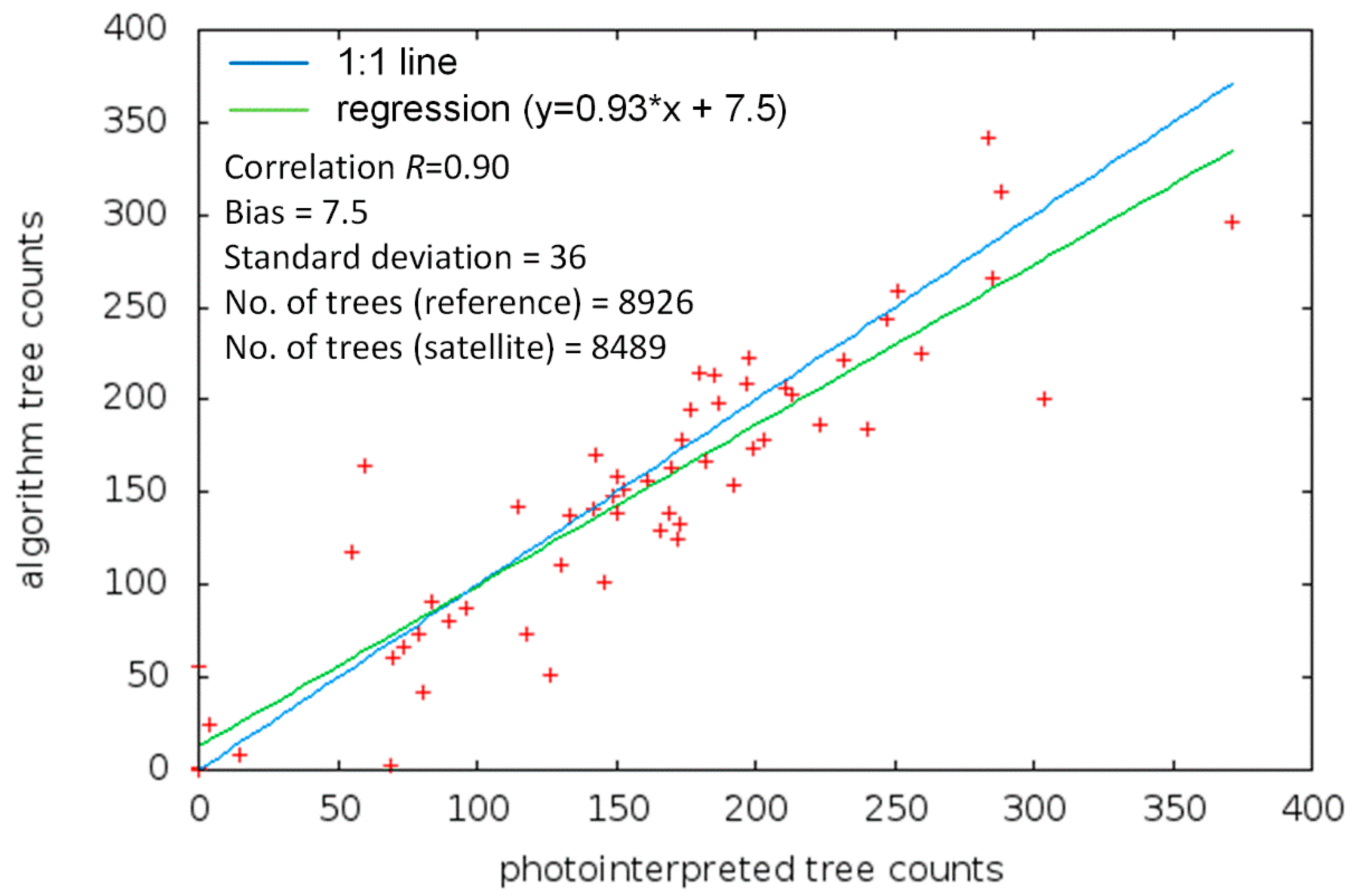
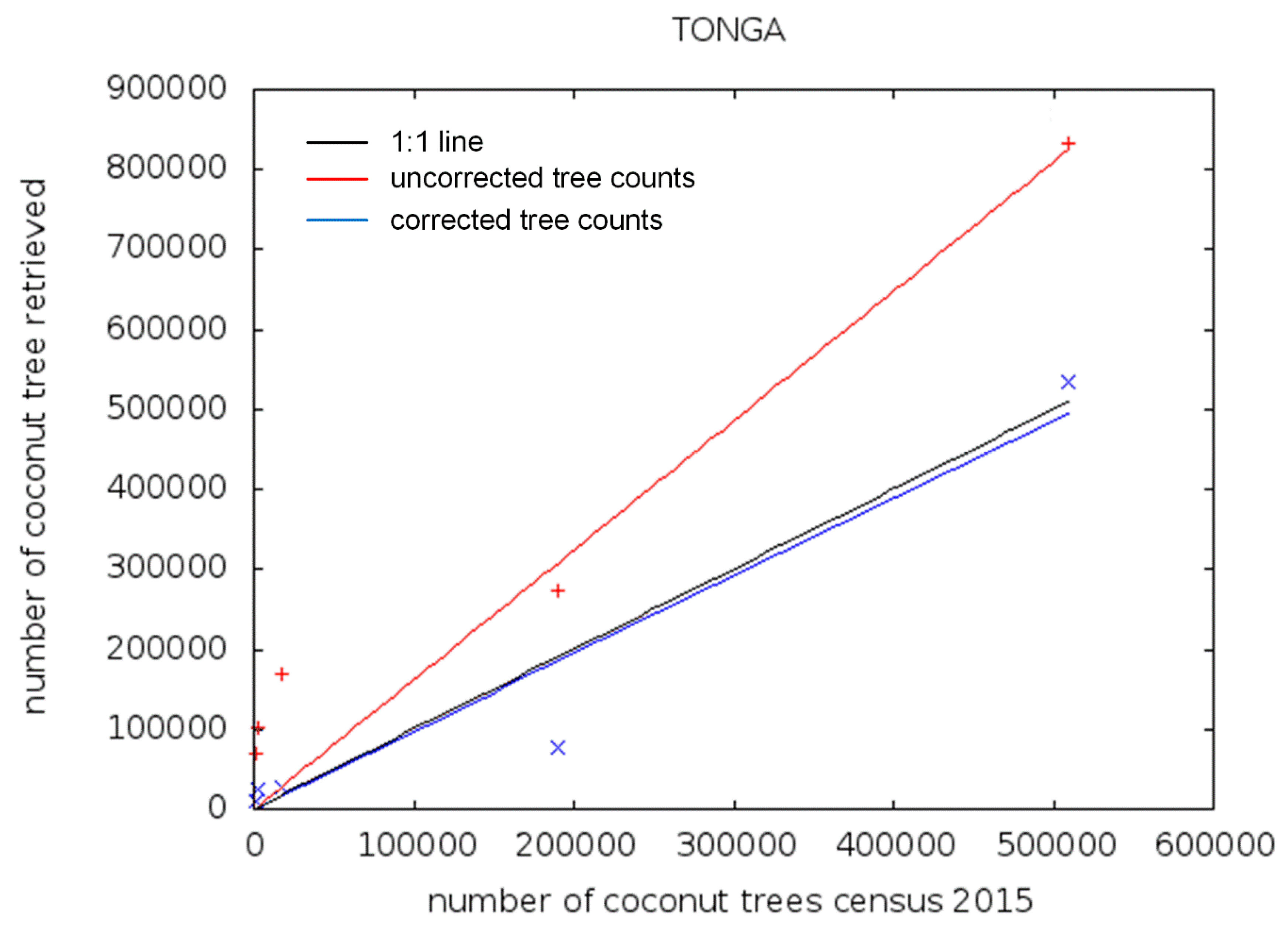
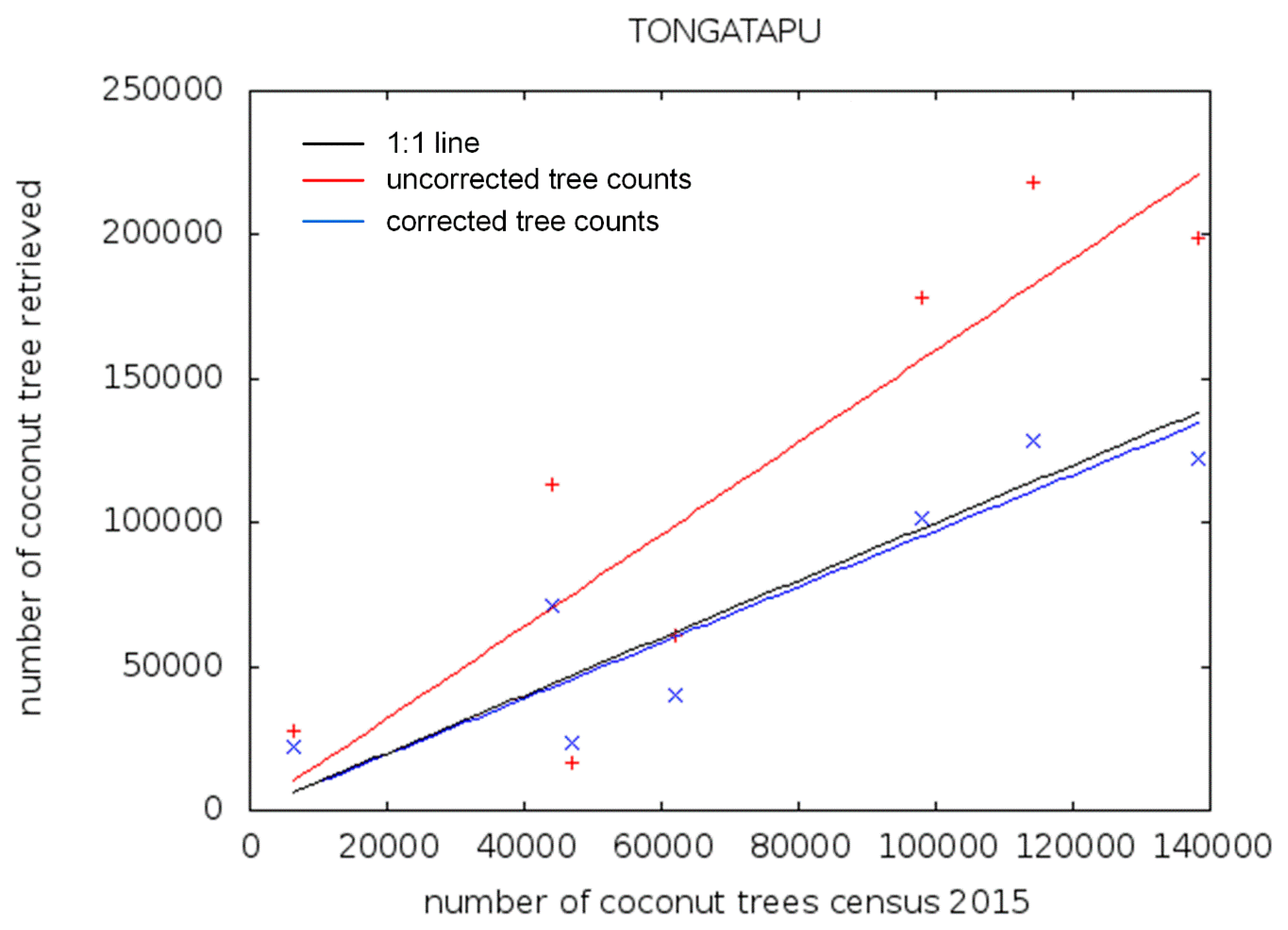
| Tonga Regions | Census No. of Trees | Satellite-Derived No. of Trees Uncorrected | Allotted Area, km2 | Satellite-Derived Area Cloud Free, km2 | Satellite-Derived No. of Trees Corrected |
|---|---|---|---|---|---|
| Eua | 2091 | 103,118 | 20.7946 | 84.2376 | 25,455 |
| Hapai | 663 | 70,497 | 18.8289 | 136.884 | 9697 |
| niuas | 17,658 | 169,281 | 11.1949 | 72.2875 | 26,216 |
| Tongatapu | 509,807 | 833,362 | 177.681 | 277.127 | 534,313 |
| Vavau | 190,057 | 273,097 | 48.0613 | 168.72 | 77,794 |
| Tongatapu Admin. Units | Census No. of Trees | Satellite-Derived No. of Trees Uncorrected | Allotted Area, km2 | Satellite-Derived Area Cloud Free, km2 | Satellite-Derived No. of Trees Corrected |
|---|---|---|---|---|---|
| Kolofoou | 46,860 | 16,662 | 16.6549 | 11.9731 | 23,177 |
| Kolomotu’a | 62,013 | 61,047 | 16.9339 | 25.5887 | 40,399 |
| Vaini | 114,217 | 218,162 | 40.3107 | 68.4282 | 128,518 |
| Lapaha | 138,364 | 199,151 | 31.6355 | 51.5951 | 122,109 |
| Tatakamotonga | 97,988 | 178,081 | 32.3685 | 56.696 | 101,669 |
| Nukunuku | 44,018 | 113,235 | 25.1135 | 39.8597 | 71,343 |
| Kolovai | 6347 | 27,784 | 14.6599 | 18.3986 | 22,138 |
| TOTAL | 509,807 | 814,122 | 177.6769 | 272.5394 | 509,354 |
© 2020 by the authors. Licensee MDPI, Basel, Switzerland. This article is an open access article distributed under the terms and conditions of the Creative Commons Attribution (CC BY) license (http://creativecommons.org/licenses/by/4.0/).
Share and Cite
Vermote, E.F.; Skakun, S.; Becker-Reshef, I.; Saito, K. Remote Sensing of Coconut Trees in Tonga Using Very High Spatial Resolution WorldView-3 Data. Remote Sens. 2020, 12, 3113. https://doi.org/10.3390/rs12193113
Vermote EF, Skakun S, Becker-Reshef I, Saito K. Remote Sensing of Coconut Trees in Tonga Using Very High Spatial Resolution WorldView-3 Data. Remote Sensing. 2020; 12(19):3113. https://doi.org/10.3390/rs12193113
Chicago/Turabian StyleVermote, Eric F., Sergii Skakun, Inbal Becker-Reshef, and Keiko Saito. 2020. "Remote Sensing of Coconut Trees in Tonga Using Very High Spatial Resolution WorldView-3 Data" Remote Sensing 12, no. 19: 3113. https://doi.org/10.3390/rs12193113
APA StyleVermote, E. F., Skakun, S., Becker-Reshef, I., & Saito, K. (2020). Remote Sensing of Coconut Trees in Tonga Using Very High Spatial Resolution WorldView-3 Data. Remote Sensing, 12(19), 3113. https://doi.org/10.3390/rs12193113






